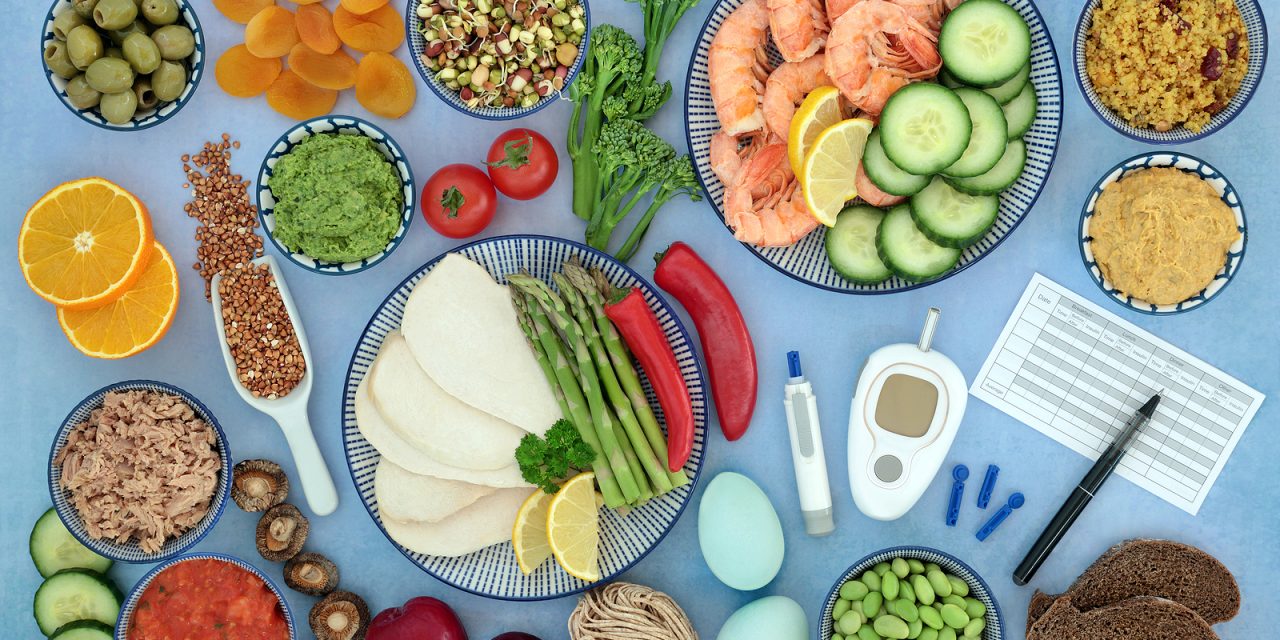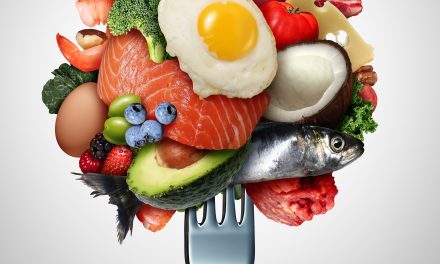Managing carbs is a crucial part of living well with Type 2 diabetes. The right amount of carbohydrates helps maintain stable blood sugar levels while providing essential energy for daily activities.

People with Type 2 diabetes typically need between 45-60 grams of carbs per meal, depending on their individual needs, activity level, and blood sugar goals. The exact amount varies based on personal factors, and working with a healthcare provider helps create the most effective meal plan.
Changing eating patterns and monitoring carb intake can make a big difference in managing Type 2 diabetes. Learning to count carbs and read food labels makes it easier to make smart food choices at every meal.
Key Takeaways
- Most adults with Type 2 diabetes need 45-60 grams of carbs per meal for good blood sugar control
- Regular carb counting and blood sugar monitoring help determine personal carb needs
- Working with healthcare providers creates the most effective meal-planning strategy
Understanding Type 2 Diabetes

Type 2 diabetes affects how the body processes blood sugar, also called glucose. The condition occurs when cells become resistant to insulin or when the pancreas doesn’t make enough insulin to keep blood sugar levels normal.
Risk factors for developing type 2 diabetes include being overweight, having excess belly fat, not exercising regularly, and having a family history of diabetes.
Diet plays a crucial role in managing type 2 diabetes. Research shows that eating patterns high in vegetable fats and polyunsaturated fats may help reduce the risk of complications.
People with type 2 diabetes need to monitor their carbohydrate intake carefully. Carbohydrates have the biggest impact on blood sugar levels compared to other nutrients.
Key Signs of Type 2 Diabetes:
- Increased thirst and urination
- Fatigue
- Blurred vision
- Slow-healing wounds
- Frequent infections
The good news is that many people can manage type 2 diabetes through a combination of healthy eating, regular exercise, and blood sugar monitoring. Some may also need medication or insulin therapy.
The Role of Carbs in Diabetes Management
Carbohydrates directly affect blood sugar levels in people with type 2 diabetes. When someone eats carbs, their body breaks them down into glucose, which raises blood sugar levels.
Managing carb intake helps control blood sugar. Low-carbohydrate diets can be effective for treating type 2 diabetes, with some patients reducing their need for insulin medication.
The type of carbs matters as much as the amount. Complex carbohydrates from whole grains, vegetables, and legumes are better choices than simple carbs from sugary foods and refined grains.
Research shows that carefully planned meals with attention to both carb type and amount can improve blood sugar control and lipid profiles in diabetic patients.
Daily Carb Targets for Type 2 Diabetes:
- Breakfast: 45-60g
- Lunch: 45-60g
- Dinner: 45-60g
- Snacks: 15-20g (if needed)
It’s important to spread carbs throughout the day rather than eating them all at once. This helps maintain steady blood sugar levels and prevents sharp spikes or drops.
A balanced diet that includes the right amount and types of carbohydrates, along with regular physical activity, forms the foundation of good diabetes management.
Determining Your Carbohydrate Needs
A person with type 2 diabetes needs to focus on both the amount and timing of carbohydrates they eat. Research indicates that 45% of total daily calories should come from carbohydrates for most people with diabetes.
The daily carb needs vary based on several factors like age, weight, activity level, and blood sugar control. A typical range is 25-50 grams of carbs per 1000 calories consumed.
For someone eating 800-1500 calories per day, this means spreading carbs across meals and snacks throughout the day. A common starting point is:
Sample Carb Distribution:
- Breakfast: 30-45g
- Lunch: 45-60g
- Dinner: 45-60g
- Snacks: 15-20g each
Working with a doctor or dietitian helps create a personalized plan. They can help determine the right carb-to-insulin ratio if insulin is needed.
Blood sugar monitoring is key to finding the right carb balance. People should check their levels before and after meals to see how different amounts of carbs affect them.
Carbohydrate Counting and Meal Planning
Carbohydrate counting is a useful meal-planning method for people with type 2 diabetes. This approach helps control blood sugar levels by tracking the amount of carbs eaten at each meal.
Most people with type 2 diabetes should aim for 45-60 grams of carbs per meal. The exact amount depends on factors like age, weight, activity level, and medications.
A simple way to count carbs is to read food labels and use measuring tools. One carb serving equals 15 grams of carbohydrates. Common examples include:
- 1 slice of bread
- 1/3 cup of cooked rice
- 1 small piece of fruit
- 1 cup of milk
Meal planning with carb counting helps create balanced meals. A balanced meal should include:
- Protein (lean meat, fish, eggs)
- Non-starchy vegetables
- Measured portions of carbohydrates
- Healthy fats in small amounts
It’s important to spread carbs evenly throughout the day. This helps prevent big spikes in blood sugar levels. Writing down meals and carb amounts in a food diary can help track patterns.
Regular blood sugar testing helps show how different carb amounts affect blood sugar. This information can help adjust meal plans as needed.
Ideal Carb Intake Per Meal

People with type 2 diabetes need to balance their carbohydrate intake throughout the day to maintain stable blood sugar levels. The recommended amounts vary based on individual needs, activity levels, and medication schedules.
Breakfast
Most people with type 2 diabetes should aim for 30-45 grams of carbs at breakfast. This amount helps prevent morning blood sugar spikes while providing enough energy for the day ahead.
Good breakfast options include:
- 1 cup oatmeal (30g) with berries (15g)
- 2 slices whole-grain toast (30g) with eggs
- 1 cup Greek yogurt (15g) with 1/2 cup granola (30g)
Research shows that spreading carb intake evenly throughout the day leads to better blood sugar control.
Lunch
A balanced lunch should contain 45-60 grams of carbohydrates for most people with type 2 diabetes. This provides sustained energy through afternoon activities.
Recommended lunch portions:
- 1 cup brown rice (45g)
- 2/3 cup quinoa (30g)
- 1 medium sandwich with whole grain bread (30g)
Adding protein and healthy fats helps slow down carb absorption. Studies indicate that combining proteins with carbs can improve blood sugar response.
Dinner
The ideal dinner carb intake ranges from 45-60 grams. This amount supports evening activities while avoiding nighttime blood sugar issues.
Balanced dinner examples:
- 1 cup pasta (45g) with vegetables
- 2/3 cup sweet potato (30g) with lean protein
- 1 cup quinoa (45g) with grilled chicken
Evening meals should be eaten at least 2-3 hours before bedtime to allow proper digestion.
Snacks
Snacks should be limited to 15-30 grams of carbs per serving. This helps maintain steady blood sugar between meals.
Smart snack choices:
- 1 small apple with 1 oz cheese (15g)
- 3 cups light popcorn (15g)
- 1/3 cup hummus with vegetables (15g)
People who exercise regularly or take certain medications may need additional snacks. Blood sugar monitoring helps determine individual snack needs.
Reading Nutrition Labels for Carbs

Label reading skills are essential for people with Type 2 diabetes to manage their carbohydrate intake. The nutrition facts panel shows the total carbohydrates per serving.
Start by checking the serving size at the top of the label. Many packages contain multiple servings, so adjust the carb count if eating more or less than one serving.
Look for Total Carbohydrates on the label. This number includes:
- Sugar
- Starch
- Fiber
Fiber does not significantly affect blood sugar. To find net carbs, subtract the fiber grams from total carbohydrates.
People with Type 2 diabetes should aim for 45-60 grams of carbs per meal. Read ingredients lists carefully – ingredients are listed by weight from highest to lowest amount.
Common terms for carbohydrates on ingredient lists:
- Glucose
- Maltose
- Dextrose
- Fructose
- Sucrose
- Corn syrup
- Rice syrup
Pay attention to foods labeled “sugar-free” or “low-carb.” These products may still contain significant carbohydrates from starches or sugar alcohols.
Balancing Macronutrients
A balanced meal plan for type 2 diabetes focuses on getting the right mix of nutrients while keeping blood sugar steady. The right combination of proteins and fats helps control hunger and maintain stable glucose levels throughout the day.
Proteins
Studies show that protein intake helps stabilize blood sugar levels in people with type 2 diabetes. The recommended amount is 20-30% of total daily calories from protein sources.
Good protein choices include lean meats, fish, eggs, tofu, and legumes. These foods have minimal impact on blood glucose while providing essential amino acids.
Spacing protein intake throughout the day works better than eating it all at once. Aim for 20-30 grams of protein per meal, depending on body weight and activity level.
Fats
Research indicates that dietary fats play a key role in managing type 2 diabetes. Healthy fats should make up 25-35% of daily calories.
Focus on heart-healthy fats like:
- Olive oil
- Avocados
- Nuts and seeds
- Fatty fish
Small portions are important since fats are high in calories. A typical serving is 1-2 tablespoons of oil or 1/4 cup of nuts.
Limiting saturated and trans fats helps reduce heart disease risk. Choose plant-based fats more often than animal fats.
High-Carbohydrate Foods to Limit
People with type 2 diabetes need to watch their carbohydrate intake carefully. Some foods can cause rapid spikes in blood sugar levels and should be limited.
Modern high-carbohydrate foods often lead to quick blood sugar increases. These foods require special attention for good diabetes management.
Foods to Limit:
- White bread and refined grains
- Sugary breakfast cereals
- White rice
- Regular pasta
- Sweetened beverages
- Candy and chocolate
- Baked goods and pastries
- Fruit juices
- Processed snack foods
Refined grains and sugars enter the bloodstream quickly. This rapid absorption can make blood sugar harder to control.
Research shows that limiting these high-carb foods helps with blood sugar management. Patients often see better results when they reduce these foods in their diet.
Reading Food Labels: Check the “Total Carbohydrates” on nutrition labels. Pay attention to serving sizes, as they may be smaller than expected.
Better Alternatives:
- Whole grain bread
- Brown rice
- Steel-cut oats
- Sweet potatoes
- Quinoa
- Beans and lentils
Fiber’s Impact on Blood Sugar Control
Dietary fiber plays a crucial role in managing blood sugar levels for people with type 2 diabetes. High-fiber diets can improve glycemic control and help reduce blood sugar spikes after meals.
Both soluble and insoluble fiber are important. Soluble fiber forms a gel-like substance that slows down digestion and the absorption of carbohydrates. This helps prevent rapid rises in blood sugar levels.
A diet rich in both soluble and insoluble fiber can lead to better blood sugar control and lower lipid levels in people with type 2 diabetes.
Recommended Daily Fiber Intake:
- 25-30 grams for adults
- At least one serving of legumes per day
- Regular portions of fruits and vegetables
Studies show that fiber-rich foods can help lower blood glucose levels. The effect is most noticeable when fiber is consumed as part of a balanced meal containing carbohydrates.
Good sources of fiber include:
- Whole grains
- Legumes
- Fresh fruits with skin
- Leafy green vegetables
- Nuts and seeds
Adjusting Carbs Based on Blood Sugar Monitoring
Regular blood sugar monitoring helps people with type 2 diabetes make smart choices about their carb intake. Blood glucose testing before and after meals shows how different foods affect blood sugar levels.
The ideal blood sugar range before meals is 80-130 mg/dL. If blood sugar readings are consistently high, reducing carbs at the next meal can help bring levels down.
People with type 2 diabetes can use this simple adjustment method:
- High reading (>180 mg/dL): Reduce carbs by 10-15g at next meal
- In range (80-180 mg/dL): Keep current carb amount
- Low reading (<80 mg/dL): Add 10-15g carbs at next meal
Studies show that lowering carb intake can improve blood sugar control in type 2 diabetes. Most people find success with 45-60g of carbs per meal, but individual needs vary.
Keep a food and blood sugar log to track patterns. Write down:
- Time of meals
- Carb amounts eaten
- Blood sugar before and 2 hours after eating
- Physical activity
- Medications taken
Make small changes and test blood sugar regularly to find the right carb balance. Work with a healthcare provider to make safe adjustments to diet and medication.
Consulting Healthcare Professionals for Personalized Advice
People with type 2 diabetes need personalized meal plans based on their unique health needs. A registered dietitian can create customized nutrition plans that fit individual preferences and lifestyles.
Key healthcare professionals to consult:
- Primary care physician
- Endocrinologist
- Registered dietitian
- Certified diabetes educator
During appointments, healthcare providers assess several factors to create meal recommendations:
- Current medications
- Blood sugar patterns
- Weight goals
- Physical activity level
- Food preferences
- Daily Schedule
Professional nutrition guidance helps people learn proper carbohydrate counting and meal timing. Regular check-ups allow for adjustments based on blood sugar responses and changing health needs.
Getting expert advice prevents common mistakes in carb counting and portion sizes. Medical professionals can also help coordinate meal plans with diabetes medications for optimal blood sugar control.
Healthcare providers offer valuable tips for managing carbohydrate balance across meals and snacks. They can suggest specific carb targets for breakfast, lunch, dinner and snacks based on individual factors.
Frequently Asked Questions
Managing carbohydrates at mealtimes plays a vital role in blood sugar control for people with type 2 diabetes. Proper carb counting and portion control helps maintain stable glucose levels throughout the day.
What is the recommended carbohydrate intake per meal for an individual with type 2 diabetes?
A typical meal plan for type 2 diabetes includes 45-60 grams of carbohydrates per meal.
This amount may change based on a person’s size, activity level, and blood sugar goals.
How does carbohydrate counting work for someone managing type 2 diabetes?
Carb counting involves tracking the total grams of carbohydrates eaten at each meal and snack.
People should read food labels and measure portions to calculate carb content accurately.
Can consuming too few carbohydrates negatively affect type 2 diabetes management?
Extremely low-carbohydrate diets may not provide enough energy for daily activities.
A balanced approach works better than completely avoiding carbs.
What constitutes a good carbohydrate choice for those with type 2 diabetes?
Complex carbohydrates from whole grains, vegetables, and legumes are smart choices.
These foods digest slowly and have less impact on blood sugar levels than refined carbs.
What is the daily carbohydrate consumption guideline for individuals with type 2 diabetes?
Most people with type 2 diabetes aim for 130-180 grams of carbohydrates per day.
This amount spreads across three main meals and optional snacks.
How does the ’15 carb rule’ apply to meal planning for type 2 diabetics?
The 15-carb rule means counting carbohydrates in 15-gram increments.
One serving equals 15 grams of carbs, making it easier to track daily intake.
This system helps people adjust insulin doses and maintain steady blood sugar levels.
Conclusion
Managing carbs remains a key part of type 2 diabetes care. The right amount varies for each person based on activity level, medications, and blood sugar targets.
Most people with type 2 diabetes do well with 45-60 grams of carbs per meal. Spreading carbs evenly throughout the day helps keep blood sugar stable.
Regular blood sugar testing and working with healthcare providers help find the ideal carb amounts. Small adjustments can be made based on individual responses and goals.
Making lifestyle changes like choosing high-fiber carbs, staying active, and maintaining a healthy weight supports good diabetes management alongside carb counting.
Success comes from finding a sustainable approach. The focus should be on making consistent, reasonable choices rather than following overly strict rules.
Regular check-ins with diabetes educators or dietitians can help refine carb goals over time as needs change. What works today may need adjustment in the future.
















